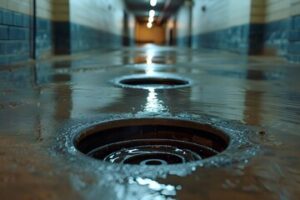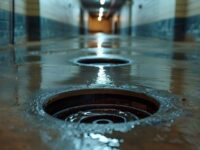Liquid Waste Removal
Liquid Waste Removal Perth is the process of capturing and removing liquid waste from the environment. This may include wash water, wastewater, used cooking oil or chemical waste.

When improperly handled, liquid waste can contaminate soil and water sources, causing environmental and health risks. To avoid this, the best way to handle it is with a specialized liquid waste management solution.
While liquid waste can take many forms, most are hazardous due to their ability to cause damage to pipelines and sewer systems, as well as endanger the environment. These materials are the byproduct of everyday activities and can include wastewater, petroleum products, chemicals, and paint. Failure to dispose of these substances properly can result in environmental contamination that can negatively affect water quality, human health, and plant growth.
Hazardous waste is categorized by federal and state regulations based on their toxicity, corrosiveness, and infectious properties. It may be generated by a number of industries, including iron and steel production, wood preservation, organic chemical manufacturing, and pesticides manufacture. This type of waste must be disposed of through a permitted hazardous waste facility.
Non-hazardous waste is any substance that does not pose an immediate threat to human health or the environment, but it must still be disposed of in a responsible manner. Some of the most common non-hazardous waste is derived from commercial and residential activities. Non-hazardous waste can be generated from car wash grit traps, oil-water separators, and animal waste. It also includes grease and oil resulting from food processing, and sewage overflows.
Disposal of non-hazardous waste is regulated by the state of Oklahoma, and businesses must adhere to strict guidelines. This includes using labeled containers, segregating materials based on compatibility, and ensuring proper ventilation. Some of these wastes can even be composted, which is a natural process that breaks down organic materials into nutrient-rich soil amendments.
During the disposal of non-hazardous waste, it is crucial to avoid allowing any pollutants to enter storm drains or waterways. This can be done by educating employees and reinforcing disposal procedures as part of regular safety meetings. It is also important to avoid allowing any liquid waste to drain into septic systems or into drinking water sources.
Liquid waste removal is critical in medical facilities. Not only does it prevent bacterial and viral infections, but it ensures that medical professionals are safe from blood-borne pathogens. Managing these types of fluids in hospitals is a complex task that requires careful handling and segregation based on type.
Sedimentation
Sedimentation is a natural process in which solid particles settle down over time in liquid due to gravity. This separation of substances allows clearer water or gas to flow above the settled particles. It has a wide range of applications, including wastewater treatment, geological processes, and medical diagnosis like Erythrocyte Sedimentation Rate (ESR).
Wastewater treatment often uses the sedimentation process to remove larger particles and solids from the water. This helps to reduce the concentration of hazardous substances, such as heavy metals and nutrients. It also improves the efficiency of downstream processes, such as filtration.
In this treatment method, water is pumped into large tanks called sedimentation basins, where it is held at a low turbulence. The solids that are heavier than the water float to the bottom and form a sludge. The water that remains is called clarified water and can be sent on to other treatment processes.
While this method can be used to treat any type of water, it is particularly effective for wastewater that contains high levels of organic matter. It also can be combined with other treatment methods to ensure that the resulting water is safe for discharge or reuse.
Using sedimentation for wastewater treatment is an economical and environmentally friendly way to treat liquid waste. It can help to reduce costs by reducing the amount of raw materials needed for treatment, and it can help to lower energy consumption. In addition, it can help to reduce the amount of harmful chemicals that are released into the environment.
One of the most significant benefits of sedimentation is that it can be used to recycle wastewater and other liquid waste. This can be done by allowing the treated wastewater to be reused for irrigation, or it can be used for other purposes, such as drinking water.
In many areas, sedimentation is being used as an alternative to traditional waste disposal techniques. By utilizing sedimentation, a lot of money can be saved that would otherwise be spent on landfills and other disposal methods. This is not only good for the environment, but it is also good for businesses that want to cut their expenses and lower their environmental footprint.
Containers
When it comes to liquid waste, there are many options for disposal. However, these methods all require the proper storage of the material to prevent a leakage or spill that could harm the environment. Proper management of these liquid materials is essential for avoiding water pollution, soil contamination and harm to wildlife.
When storing liquid waste, containers play an important role in preventing leaks and spills. It is vital that these containers are made from materials that can withstand the liquid waste’s viscosity, density and other characteristics. Additionally, these containers must be sealed tightly to ensure the contents cannot escape. In addition, these containers must be clearly labeled and color-coded to distinguish between different types of liquid waste.
The proper storage of liquid waste can also prevent accidents in the workplace. In a hospital, for example, liquid medical waste can pose significant health risks to staff if it is not segregated and stored correctly. For instance, corrosive liquids can contaminate living tissue and metal, while flammable and toxic chemicals may create fires or cause damage to property.
Moreover, improper disposal of liquid waste can result in expensive fines and penalties for the business or individual responsible. This is because the liquid waste can seep into sewer systems and cause environmental contamination, or it may contaminate drinking water. Additionally, the waste can be inhaled by workers or animals, which can lead to serious illnesses.
Liquid waste disposal is complex and involves several processes that are critical to ensuring compliance with environmental regulations. This process begins with the collection of liquid wastes, which are then stored in appropriate containers until they can be disposed of safely. Liquid wastes can be disposed of in a variety of ways, including discharge to the sewer system, land application and chemical treatment.
All liquid waste must be treated to remove hazardous substances before it can be disposed of safely. This process is usually carried out by a licensed and certified company that has the required equipment for handling liquid wastes. These treatments include distillation, aeration, sedimentation and evaporation. These processes are designed to reduce the toxicity and volume of the liquid waste before it can be disposed of in an environmentally friendly way.
On-Site Treatment
On-site treatment is a system that combines waste disposal with wastewater treatment. This type of system is commonly used in areas where housing density is low and it is not feasible to build centralized sewage treatment plants. These systems often consist of a septic tank and some sort of leach field to disperse the treated wastewater into the soils. The contaminants that are removed from the wastewater include organic chemicals, inorganic chemical, heavy metals and nutrients. They also remove disease-causing microorganisms, including enteric pathogens.
These pathogens are found in human feces. They can cause a number of diseases, including gastroenteritis, infectious hepatitis and cholera. They are also known to cause respiratory illness, myocarditis and encephalitis. The septic tanks in on-site treatment systems can cause groundwater contamination because they allow these microorganisms to leach into the soil.
In addition to contaminating the soil, improper disposal of liquid waste can have other adverse effects. For example, pharmaceutical waste can contain dangerous chemicals and pathogens that could affect public health and aquatic ecosystems. Proper waste segregation and treatment is essential for businesses and households to reduce their environmental footprint.
Liquid waste disposal depends on the type of waste. Some are sent to landfills, while others are incinerated or recycled into something useful for society. In the case of hazardous waste, specialized facilities may treat it to remove harmful chemicals and pathogens.
Another way to deal with liquid waste is through on-site treatment, which involves separating the solids from the liquids. This process helps reduce the volume of the waste, which can make it easier to transport and store. This is especially important for businesses that produce large volumes of liquid waste.
A study of 40 on-site medical waste treatment systems in four provinces of Iran was carried out. In this study, site visits with completing checklists were conducted in order to collect data related to the current condition of these systems and to compare their performance with off-site facilities. The Analytical Hierarchy Process (AHP) technique was employed to obtain the comparative evaluation results. Results showed that on-site systems have problems in financing, planning, determining the capacity of installations and operation and maintenance.






